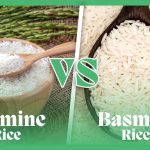Did you know that the per capita fish consumption as of 2021 is 19 kilograms, among which salmon and tilapia are among the top ten most consumed fish?
These healthy yet delicious fish are protein-packed riches and provide a plethora of vitamins and minerals necessary for sustained health. Salmon, the Omega-3 powerhouse, and tilapia, the lean protein source, face each other in a head-to-head face-off: who conquers this nutritional showdown? Let’s dive into the intriguing world of fishes and find out!
What is salmon?
Salmon is a saltwater fatty fish scientifically known as Salmo Salar and Oncorhynchus found in the Atlantic and Pacific oceans. It is the most popular fish in the U.S. that is consumed about 450,000 tons. This omega-3 fatty acid-rich fish ranges in size from 1.5 feet to up to 4 feet, and lives from three to seven years. Salmons are born in streams and rivers but move to the ocean and back to freshwater to reproduce.
Salmon includes one species of Atlantic salmon and seven species of Pacific salmon. Atlantic salmons are silvery-sided fishes but change color during the breeding season depending on their species. In freshwater, they are brown and have spots that turn silvery when they move to the ocean.
On the other hand, Pacific salmons turn to deep maroon or black from silver upon their return to fresh water for reproduction. Atlantic salmons are now found in northeastern European rivers including Iceland and Russia, while Pacific salmons in Japan, the western U.S., and the Canadian Pacific Northwest.

What is tilapia?
This inexpensive freshwater fish is native to America but is grown all over the world. Tilapia is a lean protein and low-fat fish high in niacin, vitamin B12, and selenium. It is the most farmed fish in the world due to its rapid growth, adaptability, and ability to survive in poor water and environment. It is the oldest farmed fish, which goes back 200 years and lives in streams, ponds, rivers, and lakes.
Tilapia farming practices may raise some concerns, so make sure you know the source of your tilapia fish before opting for it. Tilapia has a mild flavor and dense and firm texture and is suitable for those who are not fans of seafood.

Difference between salmon and tilapia:
Both salmon and tilapia are the two most famous culinary choices with distinct tastes, textures, habitats, nutrient composition, and farming practices. Let’s discuss some of the major differences between these two notable fishes.
Habitat:
One of the eminent discrepancies between the two types of fishes is their habitat. Salmon is a saltwater fish, while tilapia is a freshwater fish that impacts their taste, texture, and nutrient composition.
Cost:
The notable difference between the two types of fish is their cost. In this department, tilapia is the winner as it is relatively cheaper than salmon, so if you are someone who consumes fish regularly, salmon might be an expensive choice to consume.
Taste and texture:
Salmon is a fatty fish with a rich taste described as fishy or oily while its texture is flaky and buttery. It generates strong flavors when marinated and seasoned.
On the other hand, tilapia is a white fish with a mildly sweet and bland taste and a dense and firm texture. Tilapia highly relies on additional seasonings and condiments for its taste. It is less fishy in contrast to salmon and can be marinated and seasoned in numerous ways.
Color:
Salmon is typically orange or pink in color, based on the species and the diet of the fish, while the color of tilapia is influenced by its feed but is usually white or pinkish-white.
Cooking methods:
Salmon and tilapia differ in their cooking methods as well. Tilapia is an easy-to-cook fish that hardly takes 5-8 minutes, while salmon takes 10-15 minutes more to cook despite having a similar cooking process to tilapia.
Nutritional difference:
As far as nutrition is concerned, salmon and tilapia have differences as well as similarities. Both are rich in protein; however, salmon is more caloric and fatty than tilapia. Tilapia has fewer amounts of saturated fatty acids than salmon, making it a better option for those aiming to cut down their fat consumption.
Besides, salmon has an abundance of omega-3 fatty acids crucial for heart health, brain function, and inflammation. Conversely, tilapia holds more omega-6 fatty acids essential for reducing inflammation.
In the context of nutrients, salmon is high in vitamin B12, niacin, and potassium, while tilapia is a valuable resource of vitamin B6, niacin, and phosphorus. Both fish are good sources of iron, magnesium, and zinc, but salmon is slightly higher in these nutrients. Further details of their nutrient content and health benefits are discussed ahead.
Nutrient composition comparison:
Energy:
100 grams of salmon renders more calories (142 kcal) than tilapia fish (96 kcal), making salmon a high-caloric food suitable for those with high-calorie requirements.
Protein:
Both types of fish are protein-rich; however, tilapia has a slight upper hand in providing protein (20.1 g) than salmon (19.8 g).
Total fats:
Salmon is a fatty and oily fish with a total fat content of 6.34 g and has a higher saturated fat content than tilapia (1.7 g). So, tilapia is more suitable for people who wish to consume less fatty foods.
Carbohydrates:
Since fishes are high protein sources, both these fishes are the best for low carbohydrate diets.
Micronutrients:
Salmon is a good source of essential vitamins and minerals including phosphorus, potassium, iron, zinc, niacin, pantothenic acid, and vitamin B12.
Similarly, tilapia is rich in magnesium, potassium, selenium, vitamin D, and choline.
| Nutrients (100 g) | Salmon | Tilapia |
|---|---|---|
| Water | 68.5 g | 78.1 g |
| Energy | 142 kcal | 96 kcal |
| Protein | 19.8 g | 20.1 g |
| Total fats | 6.34 g | 1.7 g |
| Saturated fatty acids | 0.981 g | 0.585 g |
| Monounsaturated fatty acids | 2.1 g | 0.498 g |
| Polyunsaturated fatty acids | 2.54 g | 0.363 g |
| Carbohydrates | 0 g | 0 g |
| Minerals | ||
| Calcium | 12 mg | 10 mg |
| Iron | 0.8 mg | 0.56 mg |
| Magnesium | 29 mg | 27 mg |
| Phosphorus | 200 mg | 170 mg |
| Potassium | 490 mg | 302 mg |
| Sodium | 44 mg | 52 mg |
| Zinc | 0.64 mg | 0.33 mg |
| Copper | 0.25 mg | 0.075 mg |
| Manganese | 0.016 mg | 0.037 mg |
| Selenium | 36.5 µg | 41.8 µg |
| Vitamins | ||
| Thiamine | 0.226 mg | 0.041 mg |
| Riboflavin | 0.38 mg | 0.063 mg |
| Niacin | 7.86 mg | 3.9 mg |
| Pantothenic acid | 1.66 mg | 0.487 mg |
| Vitamin B6 | 0.818 mg | 0.162 mg |
| Folate | 25 µg | 24 µg |
| Vitamin B12 | 3.18 µg | 1.58 µg |
| Vitamin A | 40 IU | 0 µg |
| Vitamin D | 526 IU | 3.1 IU |
| Vitamin E | – | 0.4 mg |
| Vitamin K | – | 1.4 µg |
| Cholesterol | 55 mg | 50 mg |
| Choline | – | 42.5 mg |
Role in human nutrition:
Salmon:
Some of the prominent health benefits of salmon are:
Cardiovascular health:
The pinkish-white salmon is a rich source of omega-3 fatty acids and potassium, the combination of which protects against the progression of cardiovascular diseases such as lowering blood pressure and cholesterol levels, reducing arterial inflammation, heart attacks, stroke, triglycerides, and arrhythmia.
A study confirmed these findings where daily consumption of salmon for four weeks reduced systolic and diastolic blood pressure, triglycerides, and LDL cholesterol and improved HDL cholesterol levels (1).
Skin and hair health:
The omega-3 fatty acid of salmon helps keep skin healthy and hair and scalp shiny. The absence of this nutrient in the diet may result in dull and brittle hair and dry scalp.
Bone health:
The Food and Drug Administration (FDA) recommends a weekly consumption of two portions or 8 ounces of seafood for adults and 2-4 ounces for children. It is partially due to the copious amount of Vitamin D and calcium in fish, especially salmon.
Why are these nutrients so crucial? Calcium is vital for strong bones and teeth. Besides that, calcium also helps in the effective functioning of the heart, muscles, and nervous system. On the other hand, vitamin D is crucial for the efficient absorption of calcium, the core element of your bones.
Antioxidant activity:
Astaxanthin is an antioxidant found in salmon that imparts a red hue to the fish and is responsible for neutralizing the free radicals in the body. Studies demonstrate that astaxanthin mitigates the risk of heart disease by improving HDL cholesterol, decreasing the LDL, and preventing plaque build-up in the arteries.
Furthermore, it reduces inflammation in the brain and nervous system and oxidative stress, prevents skin damage by reducing the appearance of fine lines, and enhances skin elasticity.
Weight management:
The high protein levels of salmon help keep the body satiated for a prolonged period, thereby preventing obesity and reducing body weight. The protein aids in regulating the hunger hormones that manage the appetite and induce the feeling of satiety.
A study validated these findings where young adult participants were given seafood including salmon for eight weeks. The study concluded that fatty fish like salmon as a part of an energy-restricted diet led to more than 1 kg weight loss in less than four weeks (2).
Inflammation prevention:
Inflammation, the root cause of major chronic diseases can be prevented by consuming salmon and other seafood. Studies have demonstrated the positive effect of seafood, especially salmon on inflammatory biomarkers such as CRP, IL-6, and PGEF2α (3).
Brain and mental health:
Including Omega-3 fatty acids from salmon in the diet improves brain function and prevents brain-related disorders.
EPA and DHA, two long-chain omega-3 fatty acids, are particularly effective in preventing and treating multiple sclerosis, Alzheimer’s disease, epilepsy, and age-related cognitive decline (4). Furthermore, studies also suggest that consumption of salmon lowers the risk of mental health disorders like depression and anxiety and improves overall mood (5).
Consumption of omega-3 fatty acids from salmon is highly suggested for pregnant mothers to improve the cognitive intelligence of their children.
Healthy vision:
Several nutrients including vitamin A, astaxanthin, and Omega-3 fatty acid, help promote eye health.
Vitamin A in salmon helps in healthy vision by keeping a clear cornea and preventing night blindness. Astaxanthin, a carotenoid pigment, protects against age-related macular degeneration, cataracts, eye fatigue, and uveitis.
Additionally, the intake of omega-3 fatty acids is beneficial in treating dry eye disease.
Thyroid function:
Selenium, a trace mineral found in considerable amounts in salmon, helps in proper thyroid functioning. This mineral although required in small amounts imparts major functions by protecting the thyroid gland from oxidative damage caused during the formation of thyroid hormone.
Tissue repair:
Salmon is a rich source of protein that is the building block for bones, cartilage, muscles, and skin. Protein helps build and repair the tissue after an injury, maintains muscle mass, and improves muscle and bone density.
Cancer prevention:
Salmon is considered a super food owing to its rich content of omega-3 fatty acids and the amount of health benefits it has to offer. One of the main functions of omega-3 is preventing the growth of cancer cells. It is effective in preventing and treating skin cancer, colorectal cancer, prostate cancer, liver cancer, and brain tumors.
Tilapia:
Some of the main health benefits of tilapia are:
Thyroid functions:
Selenium, as discussed earlier helps in thyroid function and makes growth and development hormones. Tilapia has a higher amount of selenium than salmon, so one serving of tilapia fulfills your requirement for this trace mineral by 88%.
Selenium also acts as an antioxidant by neutralizing free radicals and preventing cell damage.
Bone health:
Calcium in combination with phosphorus helps build and maintain strong bones and teeth and may also protect against bone-related disorders. Phosphorus also helps maintain the acid-base balance in the body.
Weight loss:
Just like salmon, tilapia is a rich source of protein in addition to its low-fat content, thus making it a crucial food component in weight loss diets. The fats in tilapia are mostly unsaturated fats that contribute to diet-induced thermo genesis.
Fish are generally considered healthier than meat resources and are an integral component of a Mediterranean diet associated with reduced risk of weight gain and obesity. So sautéing, baking, and grilling tilapia can help keep you satiated for a long time and prevent you from indulging in untimely snacking.
Brain function:
Potassium is required for muscle and nerve function and helps maintain a healthy balance of fluids. In addition, it also works with sodium to maintain a sodium-potassium balance.
Cancer prevention:
Small mineral, big benefits!
Selenium is a trace mineral required in small amounts by the body and imparts major health benefits. Selenium protects the body against the cancers of breast, lung, esophageal, gastric, and prostate.
Heart health:
Tilapia helps reduce heart disease risk by lowering blood clotting, blood pressure, stroke, and arrhythmia. Although lower in omega-3 fatty acids than salmon, tilapia packs more of these unsaturated fatty acids than meat, beef, and chicken.
Tilapia has higher levels of omega-6 fatty acids that keep blood cholesterol under control and is beneficial for diabetes patients.
Blood sugar control:
Tilapia is a low carbohydrate and high protein source, thereby being suitable for keeping blood sugar under control. Their high protein content slows down the digestion and absorption of food, leading to the gradual release of glucose and preventing a sudden spike in the postprandial glucose level.
Side effects:
Both fish provide tons of health benefits to the human body, however, they do have some negative effects related to them.
Salmon:
Some of the side effects salmon consumption leads to are:
Bleeding:
The consumption of omega-3 fatty acids along with anticoagulant medications may cause bleeding issues. Fish oil is a natural anticoagulant, consuming in high doses i.e. more than 3 grams acts as blood thinners.
Diseases:
Persistent organic pollutants (POPs) found in salmon are highly associated with obesity and type 2 diabetes. They are more abundant in farmed fish as compared to the wild ones.
Mercury:
All fish contain more or less amounts of mercury. While they may not cause issues in most people, they may damage a developing fetus or affect the nervous system in children.
Tilapia:
Some of the risks of consuming tilapia fish are:
Bleeding:
Similar to salmon, tilapia may also cause bleeding problems in people on anticoagulant medications if consumed in high amounts.
Omega-3 and omega-6 fatty acid imbalance:
Tilapia has more omega-6 content than omega-3 content, ten times less omega-3 than the salmon. Omega-6 is a controversial nutrient and is believed to induce inflammation in the body upon consumption in high amounts.
Farming practices:
As the demand for tilapia increases, they are being fed more cost-effective foods that are contaminating the fish and rendering them unsuitable for human consumption.
Toxic compounds:
Arsenic is a cancer-causing metal in tilapia fish, prolonged exposure to which may cause lung and bladder cancer.
Antibiotics and pesticides:
Tilapias grow in overpopulated fish farms due to which they are more prone to diseases. For this purpose, they are regularly fed antibiotics to prevent illnesses and pesticides to treat sea lice. These toxins are beneficial for the fish but are harmful for humans.
How to incorporate salmon and tilapia into your diet?
Salmon can easily be included in our everyday diet in the following ways:
- Prepare a cob salad with canned salmon, boiled eggs, avocado, and some greens like lettuce, onions, tomatoes, and olives.
- Smoke the salmon and enjoy it on multi-grain bread with cream cheese, some lettuce, and cucumbers.
- Grill the salmon along with avocado and veggies.
- Oven-roast the salmon with a side of your favorite vegetables.
- Make a salmon bowl with poached or canned salmon, carrots, beetroot, zucchini and some balsamic vinegar
Tilapia can be healthily incorporated into our diet in the following ways:
- Grill it along with your preferred vegetables for a delicious smoked flavor.
- Baked tilapia curry with sautéed green beans.
- Incorporate it in tacos with white sauce and some corn.
- Add smoked tilapia into a bowl of salad along with lettuce, broccoli, and other vegetables of your choice, and top with some lime juice.
- Pan Sautéed tilapia topped with bell peppers.
- Steam the fish after seasoning it with herbs and lemons and serve.
- Baked tilapia and serve with your favorite vegetable on the side.
Both salmon and tilapia offer their unique health benefits to the human body. The health benefits of salmon are more inclined towards the abundance of omega-3 fatty acids, while tilapia is more beneficial owing to its lean protein. Incorporating a variety of fish including these two may ensure a diverse range of nutrients and nutritional perks.
References:
- https://doi.org/10.1016/j.atherosclerosis.2006.06.018
- https://doi.org/10.1038/sj.ijo.0803643
- https://doi.org/10.1038/ejcn.2010.99
- https://doi.org/10.1111/appy.12335









